The Smith & Wesson Model 14 Target Masterpiece and Model 15 Combat Masterpiece are by far some of Big Blue’s best old school blued steel K-Frame .38 Special goodness. These guns were from a bygone era, back when gasoline was leaded, television was the Big Three Networks, and spare ammo on a cop’s duty belt was carried in a dump pouch.
Some see these as antiquated lead slingers by today’s standards. Six-shot, .38 Special chambered medium frame revolvers with four- and six-inch barrels. Hell, the sights on these are relatively fragile by today’s standards. But you know what? I don’t care.
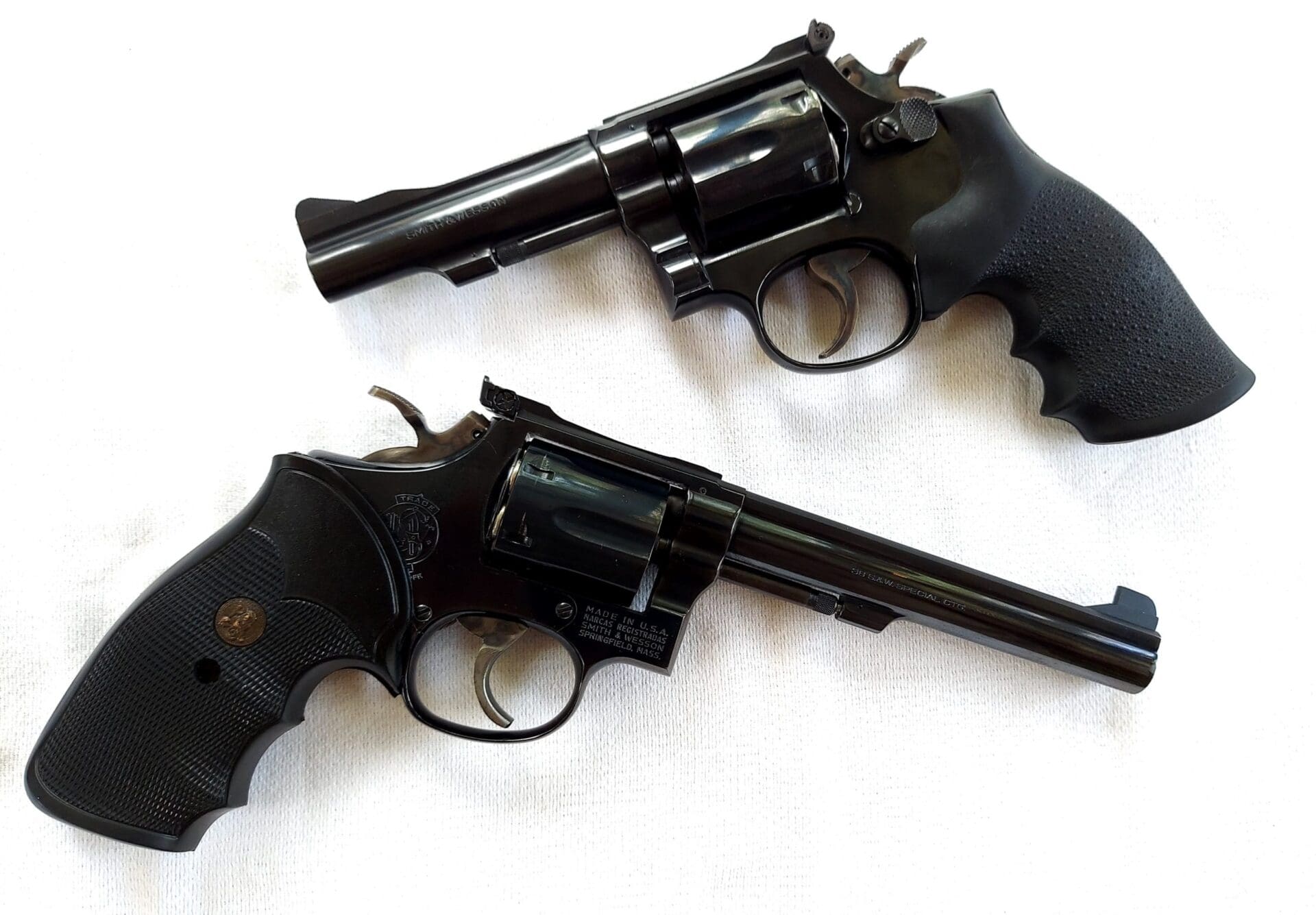 These guns are hidden gems. In an age of seventeen-round mags in wonder nines, any scoff at the idea of having a .38 Special K-Frame as their go-to hand. But it wasn’t that long ago that guns like these shown here were the daily duty guns of many in uniform around the world.
These guns are hidden gems. In an age of seventeen-round mags in wonder nines, any scoff at the idea of having a .38 Special K-Frame as their go-to hand. But it wasn’t that long ago that guns like these shown here were the daily duty guns of many in uniform around the world.
The United States Air Force Strategic Air Command and USAF’s Security Forces as a whole used the Model 15 for a very long time. First with SAC’s Elite Guards carrying nickel plated models with stag grips.
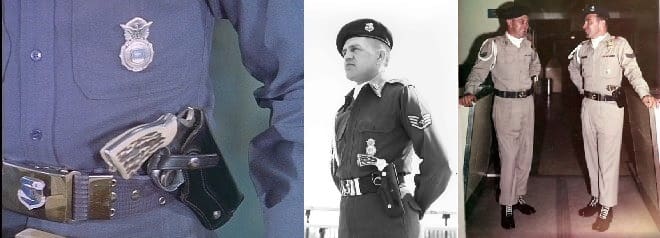 Regular security forces carried bog standard blued models.
Regular security forces carried bog standard blued models.

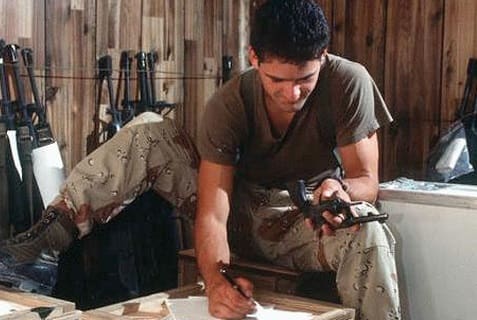
The Model 15 served a long and storied career with the USAF up until the very last ones were recently replaced by the SIG Sauer M18 pistol. The last few were used as blank training guns.
But besides the Air Force, the Model 15 served all across the country in various police, sheriffs, and correctional departments. Both city of Miami PD and Miami-Dade PD in South Florida were fond of the Model 15.
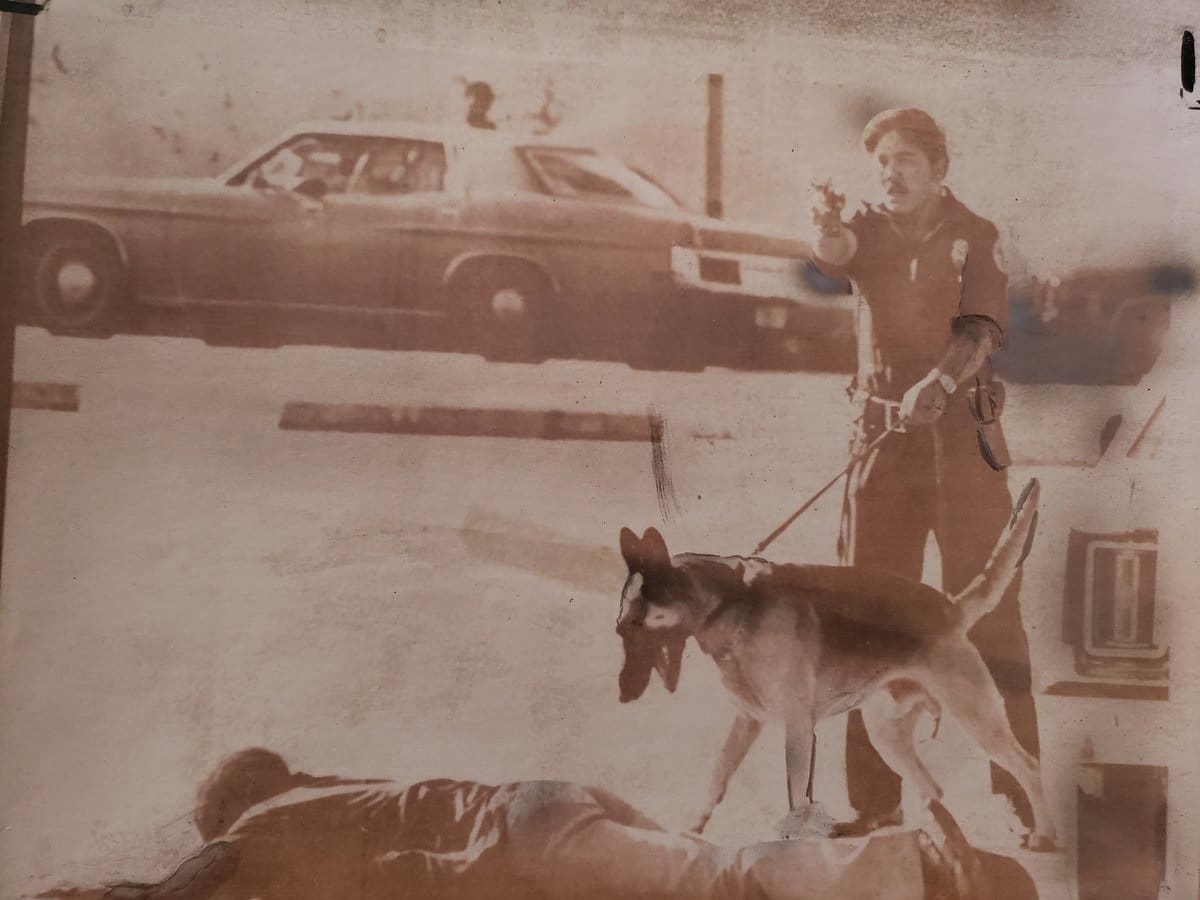
I recall seeing Model 15s in holsters of numerous police officers when I was growing up in Miami. In talking with the old salts who carried six shooters as duty guns, many said they did the job and they were glad to have ’em.
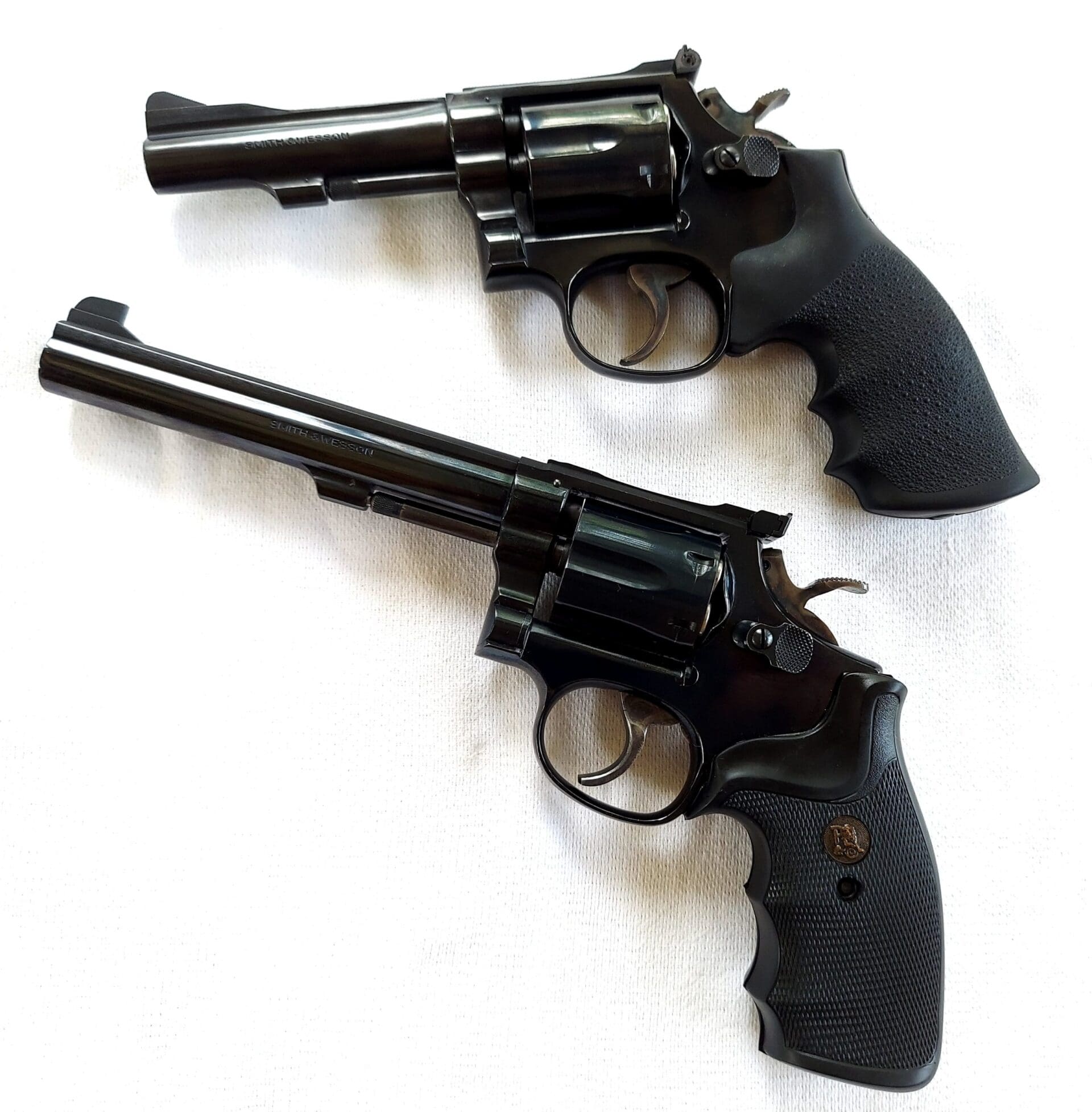
Big Blue’s six-inch target model is a true classic that harkens back to the Model K-38 Target Masterpiece. A gun that was known for its accuracy in bullseye shooting and also as a viable police duty gun.
Out west, the Los Angeles PD was a big fan of the Model 14. The gun lasted in service up until the late 1990s. It even was used during the famous 1997 North Hollywood shootout when Larry Phillips Jr. and Emil Mătăsăreanu robbed Bank of America’s North Hollywood branch. The two bank robbers got into a forty-four minute gun battle with the LAPD and that was the major turning point in American Law Enforcement that broke the camel’s back on duty guns.
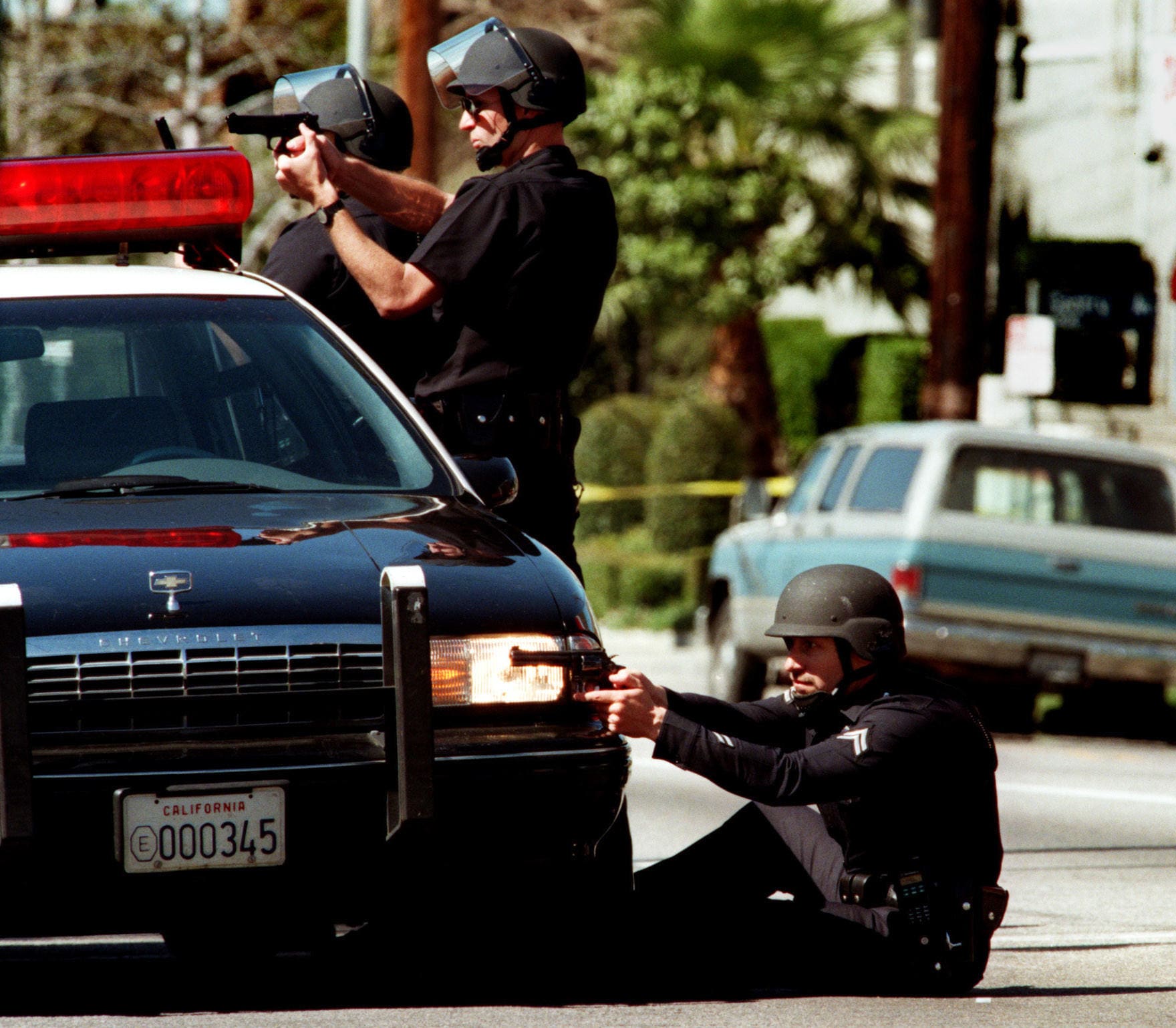
You had some hold outs that still had a soft spot for the wheel gun and others were still simply against the adoption of the automatic as a primary service pistol for their officers. But still, the Model 14 lasted that long, especially with an agency like the LAPD since they were an early adopter of the Beretta 92FS back in the 1980s. You can see one of the other officers in the photo carrying a Beretta Wonder-Nine.
In South Florida, the change was much quicker with City of Miami PD adopting the GLOCK as their duty firearm in the mid 1980s.

Anyways, enough of the history lesson. Let’s look at the guns themselves.
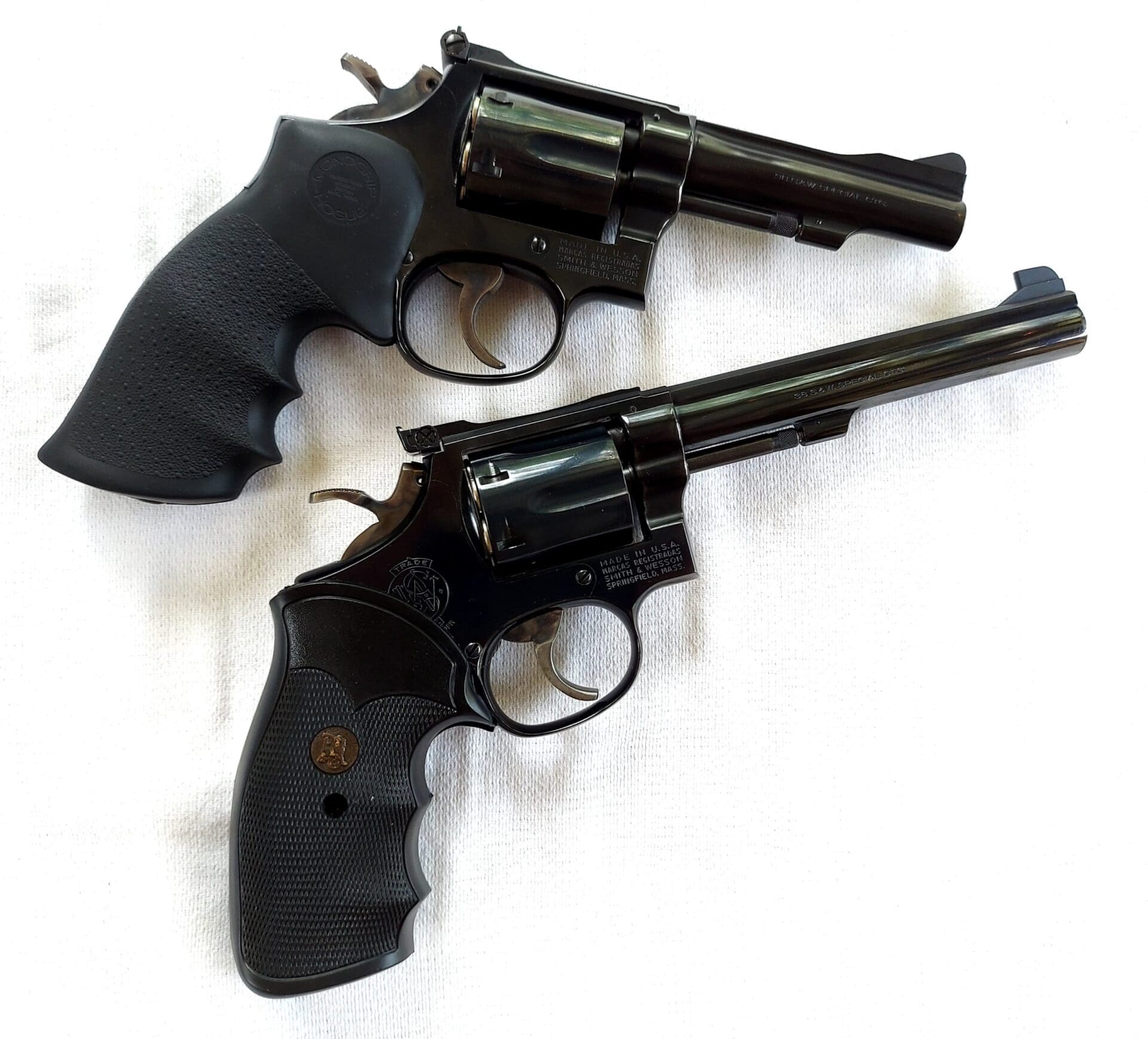
The Model 14 and Model 15 are built off the same size K-Frame receiver. The only real difference between the two is the barrel, front sights, hammer, and trigger. The Model 14 was built to be a target gun first and foremost while the Model 15 was built as an adjustable sight duty gun.
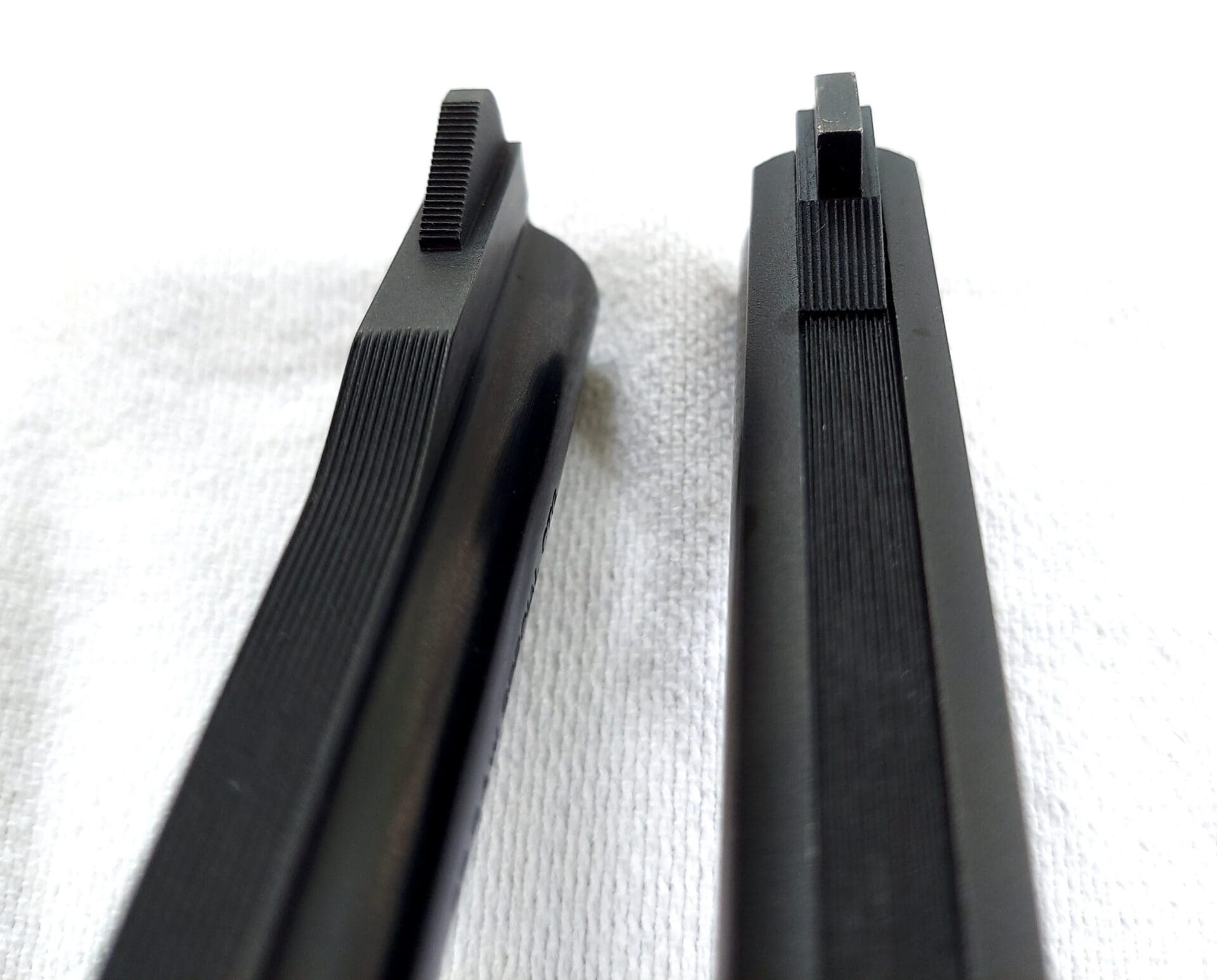

You can see that the Model 15 has a standard ramped front sight while the Model 14 has a more traditional Patridge front sight. The different was for breaking leather. A ramped front sight made it easier to draw and not snag on the leather thumb strap of the duty holster. A traditional Patridge front sight was something you’d find on target guns where a fast draw wasn’t an issue.
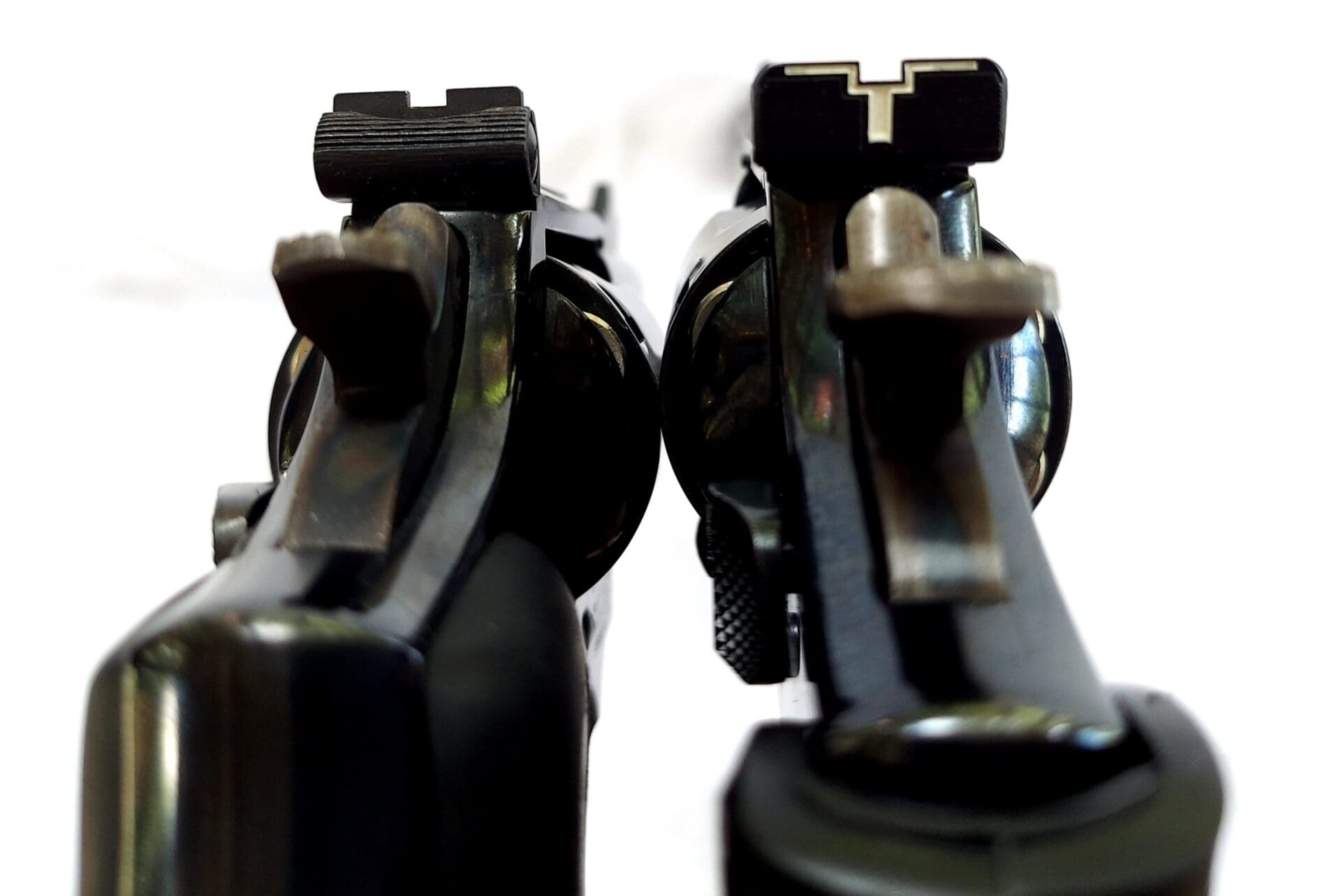



The hammer on the Model 15 is smaller in profile. Again, it was all about breaking leather on the draw and preventing it from snagging on the thumb strap to clothing. The Model 15 has a wider hammer so it is easier for a target shooter to cock it for single action.
The rear sight of this particular Model 15 was replaced with an aftermarket Millett adjustable sight. From the factory, the rear sight would have been the same as seen on the Model 15.
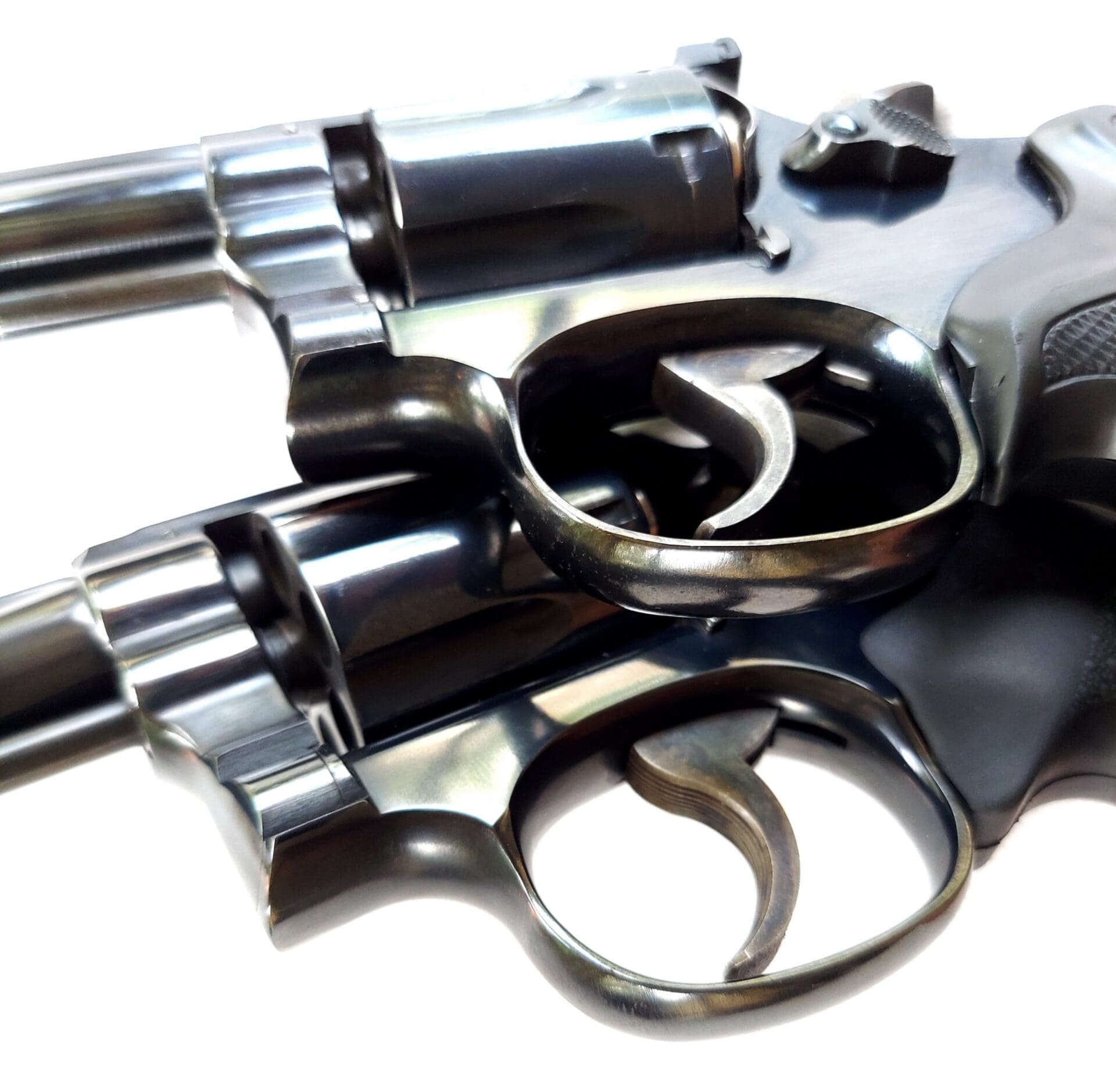

The Model 14 has a smooth faced trigger while the Model 15 as a ribbed trigger. Again, it was all about their intended uses. A Smooth faced trigger is easier on the finger pad for double action shooting. Since the Model 14 was instead to be a target gun, the idea that the shooter would be making a lot of shots and not tearing up the finger was a good idea.
The Model 15 on the other hand, has a ribbed trigger. Why? Sweat, rain, gloves, etc . . . The idea was that a rougher textured trigger would give a good perch to the shooter’s finger in any situation.
So how do they shoot? Well, I shot six rounds in each gun at 25 yards from a fixed rest at Talon Range in Midway, FL. I’d say the targets speak for themselves.
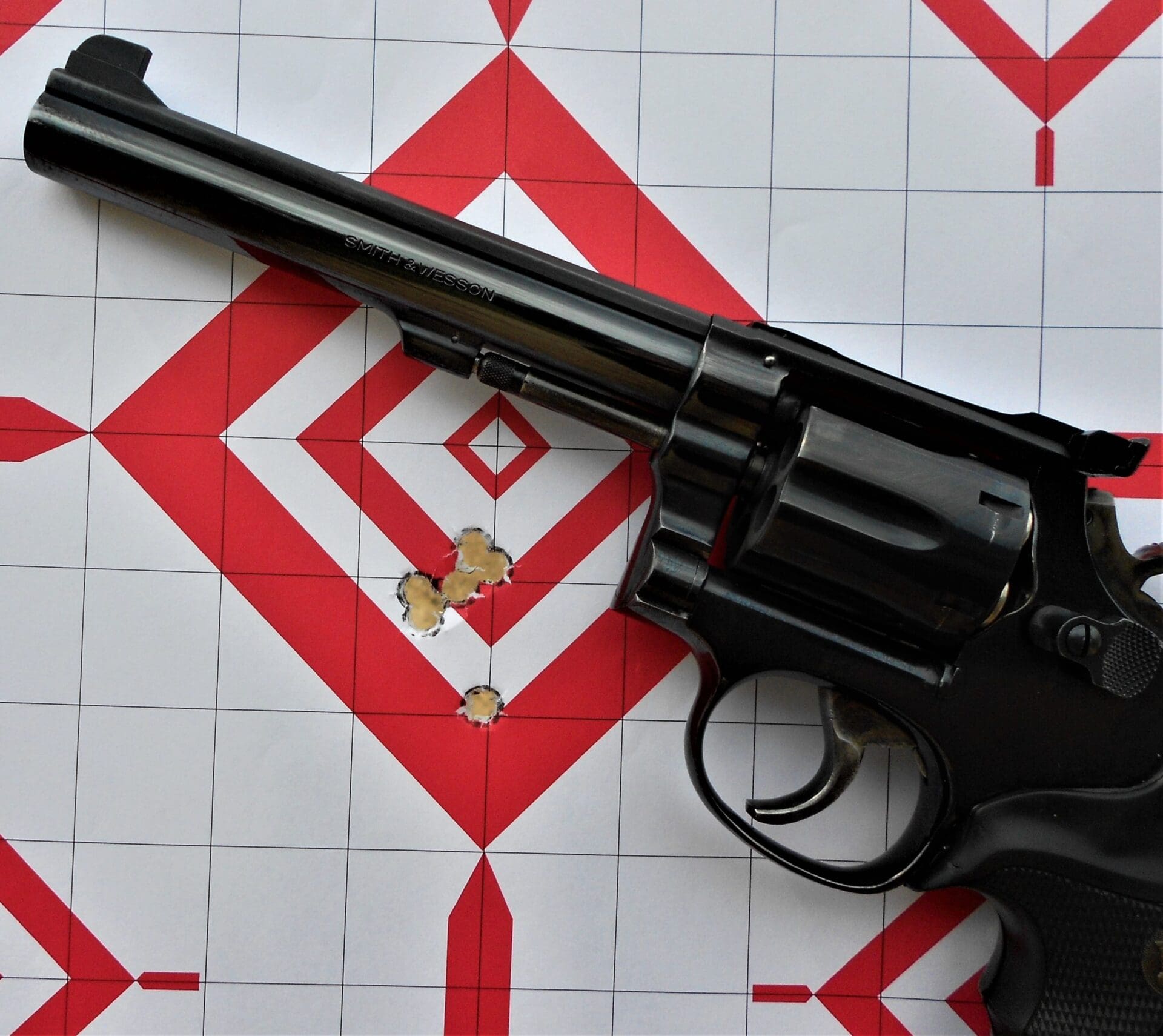



All in all, I think that isn’t bad shooting for some old school blued steel wheel guns. Especially with bottom of the barrel no name reloads that I’ve had sitting in an ammo can since George W. Bush was in office.
Are there better guns today? Yes, of course there are. But that doesn’t mean guns like the Model 14 and Model 15 are worthless or useless. No, I think they’re still good at being used for home defense or kept in a business in case a client with ulterior motives tries to make a forced five finger discount transaction.
Revolvers like these are climbing in value and that means their prices are going up. But again, I’m still fine using such a gun for self defense, especially if it was a gun that someone got for free. A lot of these guns are floating around in nightstand drawers and in the back of safes collecting dust just waiting to be inherited by the next generation of American shooters.
And with the way things are on during these crazy times, a gun is better than no gun. A box of .38 Special is still out there and somewhat affordable. Plus, they’re great tools to train new shooters on. Besides, some vagabond breaking into your house might have second thoughts if this is what he sees.


In the end, don’t hold your nose up at guns like these. They’re still great shooters and with modern defensive loads, these old work horses still have some pep left in them.



Luis Valdes is the Florida Director for Gun Owners of America.

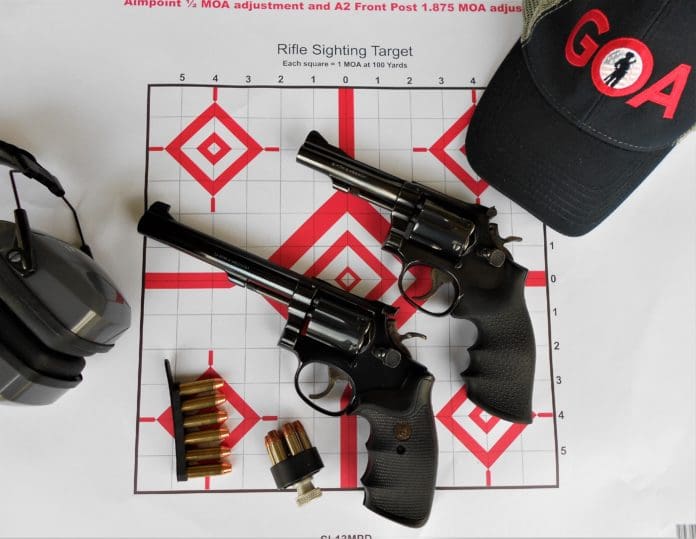



My favorite firearms are S&W revolvers. I do not limit myself to just this brand. But they are my favorite.
The old police standby of a revolver and pump shotgun still works. In fact the vast majority of folks could be equipped with just this combo and be well covered for self defense. If you think you need more just add a j frame to your pocket.
Mr. Valdes great article, thank you. I don’t own any revolvers, only several semi-autos. One of my shooting partners let me fire his and I found it to be very accurate and pleasant to shoot. Have been thinking hard about a S&M Model 29 in 44 mag, though. Thank you for your service and patriotism.
Had to qualify with the “Masterpiece”. The grip was/is so small, the pistol slightly rotated with each shot, meaning the pistol had to be “re-seated” in my hand between each shot; rapid fire was hopeless.
Always like the looks of the pistol.
Sam. Factory grips on the K frame are one size fits all. They don’t. Every time I bought one the first thing I did was get neoprene replacement grips.
Now most of the new revolvers come from the factory with neoprene type grips.
“Now most of the new revolvers come from the factory with neoprene type grips.”
Have noticed those the last few years. The article is a nostalgia piece, so wanted to report on my little piece of nostalgia.
Outstanding! More like this please.
To really appreciate these, and any S&W revolvers, one needs to go back to the 5-screw era. I have original 5-screws in Mod 17 and 18 (K22), several 14s (K38) and a number of N-frame 38-44s and some pre-27s. The actions, out of the box back then, would more than rival the Custom Shop stuff of today. That was how they came and what people expected. All it takes is time and experience, and today, both cost a hell of a lot of money and the Walmart shoppers don’t want to pay for the quality.
https://youtu.be/wX3hRj6XoUM
https://youtu.be/0OHH49vtl2g
I have an early 50s K-38 and a late 70s 14-4 with the 8-3/8″ barrel. Plus a prewar K-22 Outdoorsman. All have their own character. K-38 has the best trigger of the bunch.
“Not as clumsy or random as a blaster; an elegant weapon for a more civilized age.” – Obi-Wan Kenobi
“K” Frame S&W revolvers are almost ideal for about 70% – 80% of most first time hand gunners, after a .22LR. Enough weight, and ease of use, so a beginner can be trained to use and CLEAN it without any problems. A “J” frame size revolver, specially the “lightweight” models, are not a good choice for most women/novice shooters. Sole possible exception would be the 3″ model 60. loaded with .38 rounds. At ~20 oz., with decent grips, the 3″ model 60 is almost the same weight as a “K” frame. Back in the day, most LEOs could shoot their “K” frame size revolvers accurately, and would “dry fire” enough that the trigger was very smooth. Now, most LEOs can’t field strip and clean their “wondergun” properly, and are unable to “dryfire” their guns. The problem of racking the same round repeatedly into an autoloader is another issue that isn’t taught to new LEOs as well.
Rem 870 from approx. 66-67
Mod. 10 vintage ?
Original chiefs special
Inherited from my dad a 30 yr leo
For when I feel like playing cops and robbers
Thank you for a great article Mr. Valdes. I carried a Mod. 15 when I was a reserve cop in 1983. I still think S&W K frames are the best revolver for me. Their balance, weight and accuracy is top notch, perfect, I think, for home defense and teaching.
As a pistolero, I am especially fond of S&W revolvers. A while back i scored a Model 66 no dash off of Gunbroker and was the envy of all the old guys at my FFL. The younger set just looked a little confused.
There are not many pistols that have a trigger that can compare with a good revolver in SA!
Do not buy any of the new S&W junk as they all have MIM cast parts, their barrels are no longer pined, their cylinders are no longer recessed. Their barrels now have edm burned in rifling and the barrels are now two piece which makes the barrel itself lighter in weight and therefore less accurate than the older one piece barrels. In short their guns are now garbage.
Beware of buying an older Smith as well as parts are now no longer available and those few parts you do find that are used often will not fit your revolver as I found out when I tried to correct the timing on a Model 10 made in 1946. I found out that there had been at least 3 design changes to the lock work on the model 10 down through the years. And the cost of sending your gun back to Smith & Wesson or to a qualified Smith armorer often far exceed the worth of the revolver.
The revolver is only good for people who are largely not proficient in firearms or are hunters who need a handgun more powerful than the run of the mill automatic pistol. Alaskan fisherman often carry the big bore Smiths or Rugers but carrying a short barreled rifle carbine is far better insurance for the Alaskan fisherman against bear attacks.
The infestation of the cheaply made junk modern MIM brittle cast parts in both revolvers and auto pistols have made relying on one in a crisis situation a hit or miss proposition (pun intended).
That’s complete bullshit. I’ve got a recently made s&w .44 mag that I’ve put through all kinds of use carrying and shooting all manner of loads. I don’t shoot specials. Only full power .44 mag. It’s held up just fine through a lot of shit.
No one should be taking any advice from a piece of shit like you anyway. You have no clue about what you’re talking about, Vlad.
I might add avoid the Smith 19 guns like the plague unless you only want to shoot .38 special ammo out of them and not .357 ammo. The M19 was noted for shooting loose in as little as 2,000 rounds of .357 full power loads with the standard 158 grain bullet.
I put my reply to you here with the express purpose of replying to both or your entries above. I doubt sir, that you could tell the difference between your butt and a hole in the ground. Your sweeping blanket statements argue from a standpoint of ignorance.
As a firearms enthusiast, certified instructor, & RSO, I can say with experiential certainty that you are wrong. Period. Use “phone-a-friend” to get a clue.
These pistols are still around BECAUSE they are well built, finely engineered, made in America products. My Model 19 always brings smiles to the faces of my students and friends alike. The S&W K-frame series were some of the best firearms ever put out for consumer and commercial use.
Perhaps some day, with enough experience in your rear view mirror, you will get past your inability to recognize things as they are, not tainted with a narrow field of view because of one bad experience or personal prejudice.
You can lead the far right to knowledge but you cannot make them think. The far right never met a gun they did not love. I suppose next you are going to tell me how great the Dardick pistol was that shot trounds (triangular rounds) or perhaps the rocket pistol called the Gyrojet, now there was a real winner (sarcasm).
I believe Mr. Valdes did an article on the Gyrojet and the S&W Model 19.
https://dev.thetruthaboutguns.com/the-guns-of-the-highway-patrol-a-three-way-six-incher-showdown/
https://dev.thetruthaboutguns.com/obscure-object-of-desire-something-extremely-ugly-cheaply-made-and-very-expensive/
SA-Mann dacian. Both of your comments scream, scream loudly, that you know nothing of guns. You’ve never actually touched a gun, have you?
You’re the perfect recruit for the fascist left. Too dumb to get out of your own way.
“I learned all I know about S&W revolvers from threads on ARFCOM.”
Is…is that about right?
P&R guns are desirable to collectors. There’s a reason S&W did away with them: they were extra steps that did nothing tangible to the accuracy, reliability, and durability of the gun. And there were scads of guns that never had recessed charge holes, namely all those non-magnums like the .38s, the .44 Specials, and the .45s (ACP and Colt), and many more. S&W made far more of these than the magnums.
MIM parts aren’t as cosmetically pleasing, I’ll give you that. But the argument they are brittle or inferior just doesn’t hold up. They’re used in too many automotive and aerospace applications, often with much greater stress than a firearm induces, to be called junk.
The tensioned two-piece barrels can be tuned for greater accuracy. Would I rather have a fabulously accurate solid barrel from the factory? Sure. Will I pay $600 for just the barrel? No. So what that some of this is shoved onto the consumer? You can go buy a Korth, but those start at about three large. The days of the master machinist—anywhere in the world—working for peanuts and going home to their 600sqft house every night are over. Expert quality costs money. A $700 revolver, today, is a bargain.
I shoot with a bunch of guys who are all over 60 years old. They are the type who walk into a gun store and seeing 5 identical Government Surplus Mossberg bolt action target rifles at a good price buy all 5. One owns multiple old Pythons and actually shoots them. They all have good things to say about the modern Smith revolvers, MIM parts and all. Several would rather shoot them than the Pythons because they have better triggers.
MIM parts kinda sucked over 20 years ago when they first started appearing in many guns, but after years of development they now give reliable service.
It sucks that we can’t all have beautiful hand fitted guns for cheap prices, but much of the high quality revolvers of the past weren’t cheap even when new. When you look at what the average worker was paid back then those Triple Locks, Registered Magnums and Pythons were a major sacrifice to purchase. That’s why they are worth so much today, they didn’t really sell that many of them.
Mr. Valdes, I have cut back severely on my comments, but recently I have just had to comment. This is one of those times. I too had a S&W Model 15. You had to almost deliberately miss with it. Wish I had it back. Along with the 3 1/2″ 27 I sold it to finance. These are great revolvers and I wouldn’t hesitate to take one into battle today. Besides, they have personality. Something the half plastic pistols of today will always lack. ( I say that after ordering. Blush label Glock 19X today.) Maybe one day I will bump into you at Talon. J.D. and I have known each other for years. BTW I am a member of GOA. As should all POG should be.
J.D. is good people and thank for being a member of GOA! For the folks that don’t know, Talon Range is a great place in Midway, FL.
Blue label. Damn smart phone ain’t so smart. And JWT is correct. More please.
I might also add the Morons at Smith install the newly designed two piece barrels by using a splined tool that engages the rifling at the muzzle end. Anyone who has any experience with firearms knows how easy it is to damage the rifling at the muzzle end. This is the reason you often see military rifles with their barrels counter bored at the muzzle because of over judicious cleaning with the military steel cleaning rods that often damaged the accuracy very quickly.
I might add also that Walther took away Smiths franchise to make the Walther PPK/s series of pistols because they screwed the quality of them up so bad that they ended up trashing the Walther name.
Luis,
Thank you for your articles on revolvers. Every time I offer a younger shooter at the range a cylinder (or two) through my S&W 15, 17, 19 or 28 I see big ear-to-ear grins afterwards.
Old classic Smith’s and new Smith’s typically cost almost double what a median priced plastic / striker handgun costs. Don’t let this be the reason holding you back from owning a solid steel quality chunk of Americana.
Hopefully I have kindled a small spark of appreciation for wheelguns in some of those with the biggest grins.
Neither is inherently better…both can be excellent tools.
IF EVER GET TO BUY A REVOLVER , TRY TO OWN A S&W .
I LIKE THE REAR ADJUSTABLE SIGHTS , THEY ARE HEAVY DUTY TYPE .
GOVERNOR HAS FIXES SIGHTS , HOWEVER SHOOTS 45ACP ON THE MONEY 10 YRDS TO 80 YRDS WORKED JUST FINE .
I have a K-frame model 65-4. I shoot mostly .38 specials through it and occasionally .357s. When hiking, it’s loaded with .357s. It has the low profile sights, like my wife’s 442-2.
Great wheel gun.
Excellent article. I’m a Ruger fan, but Mr. Valdes’ articles on revolvers give me a warm, fuzzy feeling inside. A wheelgun is my choice for carry and home defense.
I also am a Ruger fan- I recently used my old Security Six to qualify for my retired officer carry card. And I still shoot a better score with it than my Sig. When I was with Treasury, we carried Model 15s and Detective Specials. Good guns, beautifully made.
Thank you, thank you for spelling it as “Patridge”. Among my pet peeves are “Partridge sight”, “Leopold scope”, and the “mounted Calvary”.
I had a Partridge sight. But it kept pooping on my barrel.
Luis, your current series on revolvers and historical background of same is really great!
Keep up the good work. It is much appreciated, and now becoming much anticipated.
Thanks for your service, and your articles.
first handgun I qualified on was the Model 15 Combat Masterpiece while a cop the USAF in 85 while stationed at Nellis AFB. It was older than I, had skinny grips and rattled like a bucket of bolts. I didn’t qualify the first time but the second time was a charm. I’ll always have a soft spot for it…
This was a great article thank you!
I have both older, pre-lock S&W revolvers as well as the newer models with two piece barrels. The new guns shoot easily as well as the older ones.
Flatulent wind bags like Dacian can spout off all they want about how terrible the new gun are.
Gunblue490 does an excellent comparison of old vs new and dispels much of the BS about newer S&W revolvers.
https://m.youtube.com/watch?v=4h9l2ipiKf4
Nice article. Great guns.
I carried a custom nickel model 28 5 inch converted to 45 ACP up until 2007 when I retired from the BC OP. Lightning fast reloads with the moon clips, kicked like a 22 with with gold dot 45+ P and an awesome trigger.I did have a Glock 21 to carry when it rained or snowed.
I’ve always felt the K-Frame Smiths to be the archetypal double action revolver to which all others should be compared. They are just… right.
There is no revolver that has pointed as naturally, operated as intrinsically, and landed rounds with as much Zen-like precision as my round butt .38 SPL K-Frames. I simply adore them.
I got my Florida Class “G” license (armed security) back in early 90’s and used my Model 64-5 4″ heavy bbl for range qualification. When I was awarded my certificate the instructor announced to the class that I was the first student they’d ever had (20 years in business) to qualify with a perfect score. I certainly was pleased with my score, but I was not surprised in the least… that K-Frame just did what it always did for me- put bullets exactly where I wanted them. No fuss… just trust.
The other stand-out K-Frames (that I dearly wish I still had) were my 3″ Model 10, and my 2″ Model 12. Even if I was able to track down decent examples of those gems today- I doubt I could afford to purchase them.
Oh well… live and learn, I guess.
I have a 3” 66-4. Love that gun.
There is NOTHING like a K and L frame Smith & Wesson.
2 things:
1. I question the trigger statement. My K-38 (vintage 1975) came with a ribbed target trigger and my model 15 (again, mid-70s) came with the smooth, 5/16″ combat trigger. I replaced the target trigger with a combat trigger on the K-38 for DA competition. Until recently, both were winning DA revolver matches. Unfortunately multiple shoulder surgeries and arthritis have rendered the shooter the weak link in the chain.
2. As to model 19s, a friend’s 4″ model 19 seized up after 26 rounds of 125 gr. JSP S&W .357 Magnum ammo – it was labeled “S&W” but was made, if memory serves, by Fiocchi. He had just been discharged from the USAF. This was 1978. His model 19 shot fine until the third cylinder of S&W Ammo, then it became a bit balky. By round 26, the cylinder would not turn – the topstrap had stretched enough that the front of the cylinder was jammed into the back of the barrel. S&W sent him a new replacement for free, no questions asked.
Bottom line: While K-frames may be chambered for .357 Magnum, a steady diet is not recommended. Save the magnum loads for “serious social work.”
Comments are closed.